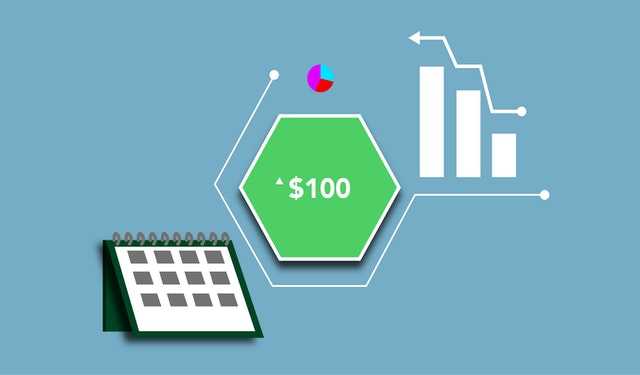How Do You Do A Cost Benefit Analysis?

A cost-benefit analysis is also known as a benefit-cost analysis is a method for evaluating decisions, systems, or projects, as well as determining the value of intangibles.
The model is constructed by identifying the benefits of a particular action as well as the costs associated with it and then subtracting the costs from the benefits.
A cost-benefit analysis, once completed, will provide concrete results that can be used to draw reasonable conclusions about the feasibility and/or advisability of a decision or situation.
.jpg)
The History of Cost-Benefit Analysis
The earliest evidence of the use of cost benefit analysis in business is attributed to Jules Dupuit, a self-taught economist and French engineer.
Dupuit used basic concepts of what would later be known as cost-benefit analysis to determine tolls for a bridge project he was working on in the mid-nineteenth century.
What Is the Purpose of Cost-Benefit Analysis?
Cost-benefit analysis is used by businesses to support decision-making because it provides an unbiased, evidence-based view of the issue at hand, free of the influences of opinion, politics, or bias. Cost-benefit analysis is a valuable tool for developing business strategy, evaluating new hires, and making resource allocation and purchase decisions because it provides a clear picture of the consequences of a decision.
How do you do a cost-benefit analysis?
The majority of businesses strive to increase their investment returns. As a result, they do everything they can to reduce their risks by conducting a thorough Cost Benefit Analysis.
While some people/companies find it a long and tedious process, others simply don't know where to begin. As a result, if you are such a person or organization, you have come to the right place.
.jpg)
A step-by-step guide to calculating CBA for your business entity is provided below.
Step 1: Determine the costs
First and foremost, you should make a detailed list of all the costs associated with your proposed investment or action. Remember that costs are divided into several types:
- direct costs
- tangible costs
- indirect costs
- intangible costs, and
- real costs.
Direct costs– Costs directly related to the project or investment's production are known as direct costs.
Costs that are not directly accounted for in the investment are referred to as indirect costs. They come in two varieties: fixed and variable.
Costs associated with a specific source or asset are known as tangible costs. Rents and payrolls are just a few examples.
Intangible costs are difficult to quantify and fluctuate according to consumer demand.
Real costs– these are the costs associated with the actual manufacturing process, such as labor and raw materials.
.jpg)
Step 2: Identify the Advantages
After you've compiled a comprehensive list of all project/investment costs, you'll need to start identifying and quantifying all expected benefits if the investment/project is implemented.
First, determine the monetary benefits, such as product and service profits, investor contributions, and production reductions, among others.
You should also consider some of the nonmonetary benefits that may arise. Reliability increased durability, and improved customer satisfaction is just a few examples.
Step 3: Assess the financial and non-financial costs and benefits
This is the last step in the cost-benefit analysis process. You can put all of the benefits, as well as the total cost, into a b/c equation here.
If the total costs exceed the total benefits, it is a sign that the project/investment is not worthwhile. However, if the total costs and benefits are roughly equal, it's a good idea to re-evaluate the CBA.
Errors or incorrect calculations are frequently the cause of such situations.
If the total value of the benefits exceeds the total value of the costs incurred, the project/investment is likely to be worthwhile.
.jpg)
A Specific Study Area Is Involved in Cost-Benefit Analysis
The consequences of a project are determined for a specific study area, such as a city, region, state, country, or the entire world. In the case of cotton, the project's impact on the nation could be zero, but it could still be beneficial to Arizona.
The nature of the research area is usually determined by the organization that is funding the study.
Many of a project's effects may "net out" over a larger study area, but not so much over a smaller one.
The study area may be chosen at random, but it can have a significant impact on the analysis' conclusions.
Benefits and costs must not be counted twice
A project's impact can sometimes be measured in two or more ways.
For example, when a better highway cuts travel time and reduce the risk of injury, the value of property in the highway's service area rises.
The increase in property values as a result of the project is a very good way to measure the project's benefits, at least in theory.
.jpg)
However, if the increased property values are taken into account, the value of the time and lives saved by the highway improvement isn't necessary.
The value of the property increased as a result of the time savings and reduced risks.
Double counting would be required to account for both the increase in property values as well as the time savings and risk reduction.
Author Bio
The Editorial staff includes content researchers from various areas of knowledge. They add a plethora of expertise to the Hubslides Editorial team. They constantly and frequently oversee, produce and evaluate contents that are most ideal to aid impacting knowledge to readers.
Article Comments
No Comments!
At present there are zero comments on this article.
Why not be the first to make a comment?
Similar Articles
Sponsor
Search Articles
Experts Column
Latest Articles
Featured Articles
Most Popular Articles












